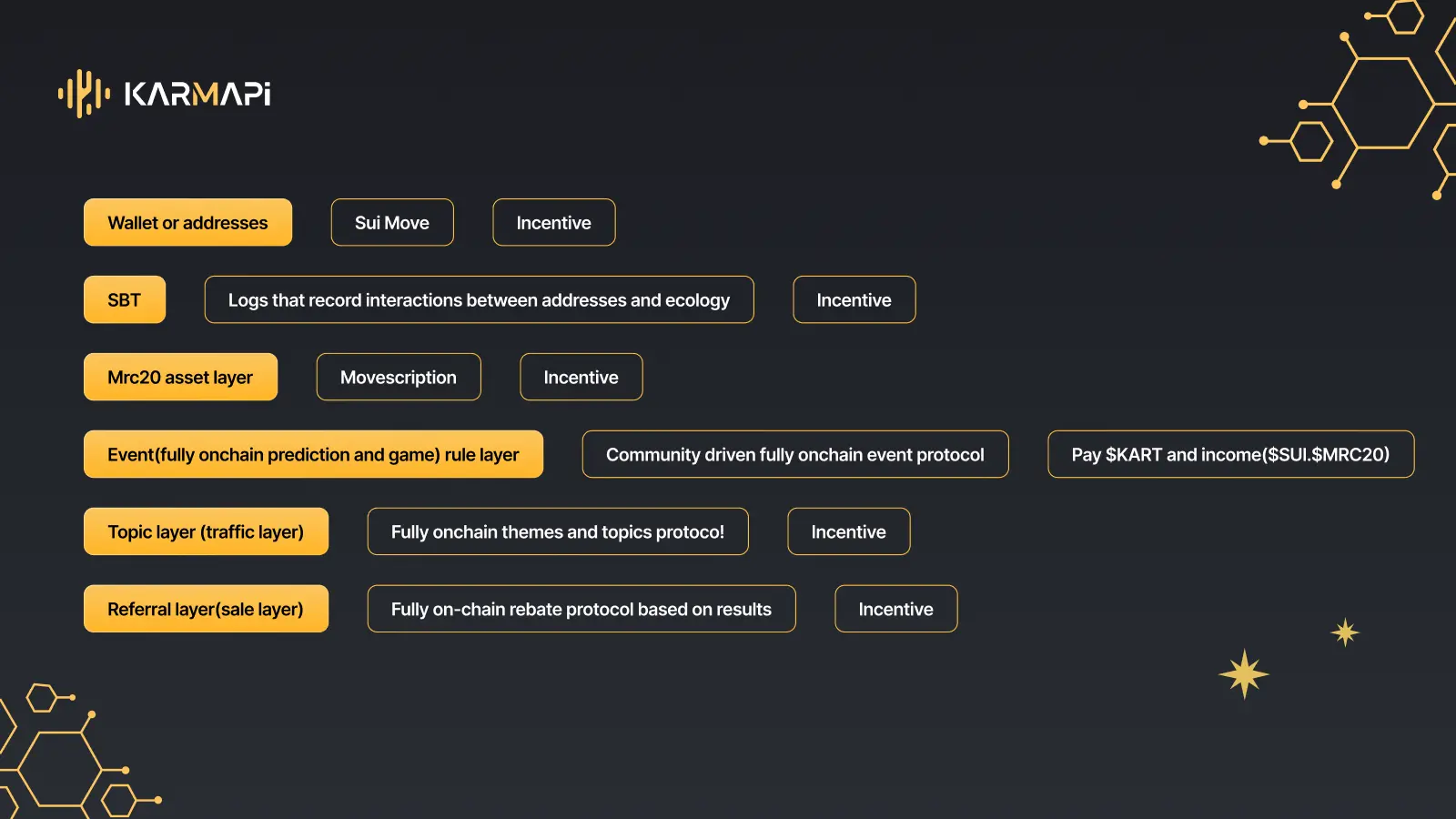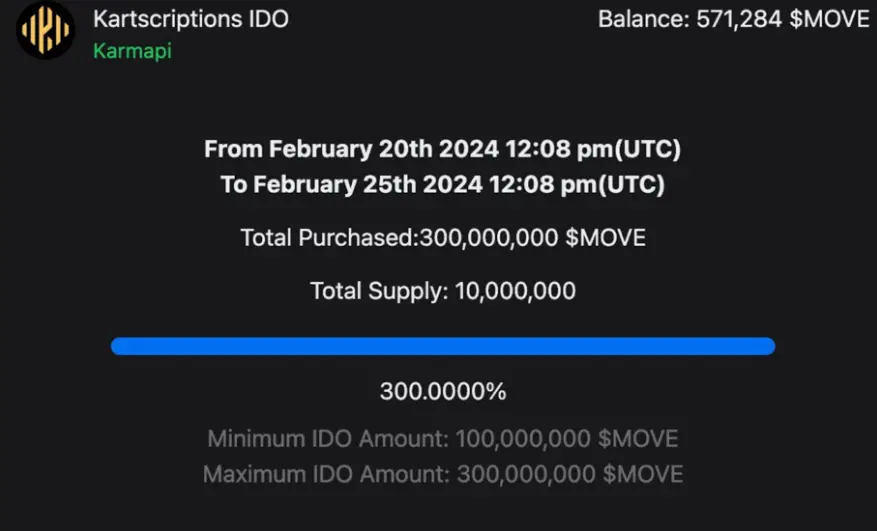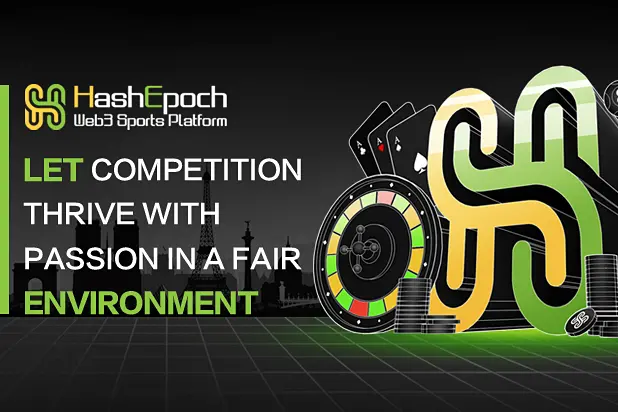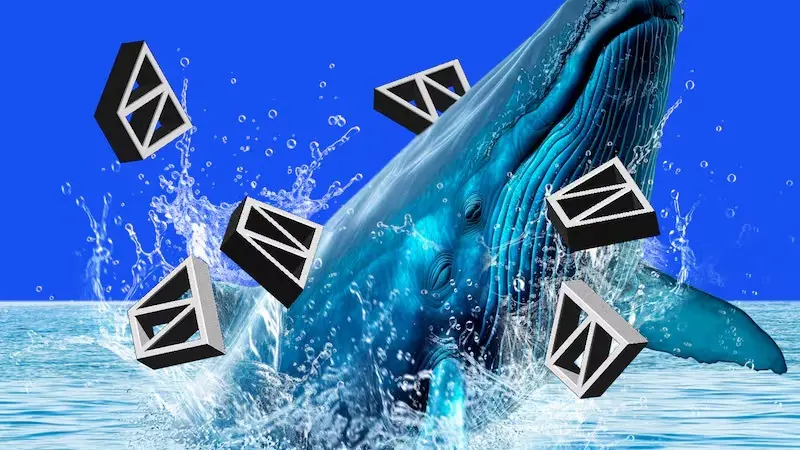An Analysis of Karma Protocol: The First Community-Driven On-Chain Prediction Market Protocol Based on Sui Network
As of early 2024, we have witnessed the impressive figure of $5.7 million in market size for Polymarket (a prediction market platform). Additionally, during various popular events, fan tokens, as an alternative asset form for event predictions, saw daily trading volumes exceeding $2 billion at peak times. This phenomenon clearly indicates that existing prediction market platforms have not yet fully met the enormous prediction demands of users compared to the vast event prediction scale represented by Fan Tokens. An example of the trading volume of Fan Tokens during hot periods reveals the significant growth potential of prediction markets. Innovative solutions provide opportunities to address existing challenges, offering better solutions to improve the current situation and better meet users' interests in diversified prediction market demands.
Blockchain Experts Have Strong Expectations for Prediction Markets
Binance announced the launch of Futures NEXT, allowing users to earn rewards by predicting the tokens that will be listed on Binance contracts. The NEXT Pool showcases a curated collection of potential listing tokens nominated by users. Binance stated that Futures NEXT operates independently of Binance's listing process, focusing on rewarding accurate market predictions. Futures NEXT rewards include futures vouchers for new traders and rebates on futures trading fees for existing futures users.
Meanwhile, Vitalik Buterin described prediction markets as early as 2020: "I expect that in the coming years, prediction markets will become an increasingly important application technology for Ethereum. The 2020 U.S. election is just the beginning; prediction markets will attract more attention, covering not only elections but also conditional predictions, decision-making, and other ecological applications."
Alliance DAO, one of the most well-known investment institutions in the blockchain space, mentioned three core issues in the prediction market space in its "Startup Ideas": discreteness, binary outcomes, and limited non-continuous conditions. Of course, these issues are also evident in current prediction market applications.
Case Study on Polymarket and Fan Tokens
Polymarket is currently one of the largest platforms in the blockchain prediction market. However, it still faces related issues arising from the centralized provision of prediction events: uneven topic traffic, lack of liquidity between duplicate options, insufficient diversity of prediction events, and low community engagement.
Similar issues also appear in traditional prediction markets, where options lack interoperability across different but related topics. This problem forces users to separate their assets across various topics for collateral, affecting the liquidity of their assets. Additionally, under the AMM model, centralized bookmakers, market makers, and liquidity providers cannot avoid the risk of losses.
On the other hand, while Fan Tokens are highly sought after assets during hot events across various exchanges, they also face significant issues, such as insufficient liquidity during non-event periods, unstable value, and limited use cases.
These challenges urgently require an innovative solution to combine and enhance the functionalities and effects of prediction markets and Fan Tokens. The KarmaPi team, after years of exploration in prediction markets, has a deep understanding of the enormous potential of prediction markets and the urgent issues that need to be addressed, and is committed to providing better solutions for the prediction market space.
Latest Solution - Karma Protocol V3: The First Fully On-Chain Prediction Market Protocol Based on Sui Network
The KarmaPi team (https://karmapi.ai/) has launched the first fully on-chain prediction market protocol based on the Sui network, Karma Protocol, aimed at unleashing the potential of prediction markets through community-driven initiatives. We believe that the KarmaPi team's solution, which combines cutting-edge smart inscription technology with prediction market protocols, can bring new opportunities to prediction markets.

In the Karma Protocol, we have made the following detailed annotations regarding the new assets and logic generated:
- Prediction Props: Smart inscriptions from the Sui ecosystem (Twitter: @SuiNetwork) or smart inscriptions in Movescription format will serve as prediction props on the Karma Protocol. These props have unified liquidity and participate in various topics, being aggregated for application.
- Fully On-Chain Prediction Event Protocol: Prediction events are initiated and participated in by the community, driven entirely by the community. Community-driven event initiation promotes diversity in the prediction event ecosystem. The combination of the props layer and the prediction event layer ensures that the entire prediction protocol is aggregated, rather than being influenced solely by the binary outcomes of individual prediction events.
- Traffic Allocation Based on Fully On-Chain Topic Protocol: Traffic is allocated through a fully on-chain model, facilitating traffic conversion and interoperability between layers, expanding and accommodating the possibility of full-chain ecological asset participation.
- Protocol Token: The $KART token serves as the core governance token of the Karma Protocol, used to initiate prediction topics and access other platform features. Deploying prediction questions requires consuming $KART tokens. Currently, $KART will be stored in Karscriptions, and any deployment, participation, and rewards corresponding to $KART will be deducted and added in Karscriptions.
- Prediction Result Settlement Rules: After confirming the prediction results, all smart inscriptions from the losing party will be sent to the settlement pool. 95% of the total settlement pool will be allocated to the winners, 2.5% will be allocated to the creators of the prediction events, and another 2.5% will be allocated to the $KART Foundation (for purposes such as burning and rewards).
- Deployers can also destroy/burn the losing party's inscription assets when deploying topics, and during settlement, they will directly share the equivalent $Sui generated from the destruction of the inscription assets.
- The source of prediction result information and the rights to settlement currently support the customization of event settlement rights Cap:
- Information can come from the creators of the prediction events and be settled by the creators.
- Multiple parties can provide information, and settlement is conducted jointly by multiple parties.
- Oracle settlement.
- Multi-oracle settlement.
- Random number settlement.
Successful Collaboration with MoveScriptions and First IDO
Karma Protocol has established a partnership with the MoveScriptions community. The MoveScriptions community will utilize the Karma Protocol to create community prediction events to empower $MOVE and mrc assets, and support the development of the Karma Protocol. This collaboration aims to enhance the diversity of prediction event protocols and smart inscriptions, promoting the full-chain community development of Sui.
Recently, Kartscription, as the first smart inscription asset storing $KART and jellypi (the Karma Protocol mascot jellyfish), completed its first IDO on MoveScription, raising 200% of its target in 60 seconds and completing 300% of the IDO in the following 6 hours, indicating the $MOVE community's warm welcome for the fully on-chain prediction market protocol, Karma Protocol.
Monetization Mechanism of Karma Protocol
After the IDO process of Kartscriptions, Kartscriptions will have an initial price of 3,000 $MOVE (equivalent to 0.345 $SUI).
- $KART: As the main protocol token, it will not be independently unlocked for trading in the early stages; it will be stored in Kartscription. Each use will deduct an equivalent amount of $KART from Kartscription.
- Kartscriptions: Smart inscriptions used to store and consume $KART and other KarmaPi ecological assets, also a type of graphical duality inscription asset, serving as the main medium in the fully on-chain interaction scenarios of the Karma Protocol.
- Deploying each prediction event in the Karma Protocol will consume 100 $KART, and these consumed $KART will serve as rewards for staking Kartscriptions.
- After the settlement of prediction events, all participants in the prediction events will receive $KART rewards, stored in their held Kartscriptions.
- Settlement classification rules (refer to "Prediction Result Settlement Rules")

What is the governance asset veKS? How to obtain it?
- Protocol Protection: Users can stake their held KartScriptions to protect the protocol and receive corresponding veKartScriptions (hereinafter referred to as veKS) to gain corresponding governance rights (Community Governance Right).
- Governance Right holders can participate in regular voting to decide the allocation weights of rewards among various incentive program pools within the Karma Protocol ecosystem, thus influencing how much $KART incentive rewards each incentive program pool will allocate. This is also the core aspect of the rights.
- The choice of staking KartScription duration (at least 1 KS) determines the proportion of governance rights (Governance Right) obtained. By selecting the staking duration at the time of staking, users can immediately receive governance rights proportional to their weight after confirming the stake.
- Choosing to stake KS for 1 year will immediately yield 0.25% veKS; for example, staking 100 KS for a year can yield 25 veKS.
- Choosing to stake KS for 2 years will immediately yield 0.5% veKS.
- Choosing to stake KS for 3 years will immediately yield 0.75% veKS.
- Choosing to stake KS for 4 years will immediately yield 1 veKS.
- Note that once the KS staking is completed, the obtained veKS cannot be redeemed before maturity, cannot be transferred, and cannot be traded.
Usage and Revenue Scenarios of veKS
- Holders of veKS will supervise and decide the execution of voting results based on their corresponding governance rights proportion (core contributors execute based on voting results through multi-signature).
- The Incentive Plan allows for proposal submissions and voting on proposals, involving new incentive plans, parameter settings, and modifications of the protocol.
- Holding veKS allows holders to receive a share of transaction fees on the protocol or platform, sourced from the protocol's revenue pool (the revenue pool is 2.5% of the total settlement pool for prediction events, which comes from users deploying prediction events and generating results, leading to final settlement assets).
- Holding veKS allows for a share of transaction fees generated from on-chain trading by ecological users. This revenue segment comes from transaction fee sharing generated by FT Swap, SFT exchange, NFT Exchange, etc. (for example, sKART has a 1% transaction fee on Cetus).
- veKS can only be redeemed upon maturity; it cannot be redeemed before maturity (i.e., users cannot cancel KS staking), and veKS cannot be transferred or traded, only used for governance and revenue.
Thus, Karma Protocol has evolved into a fully on-chain ecosystem built around positive externalities involving "business & incentives & governance" through asset and asset circulation.










